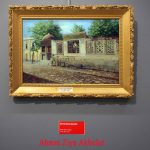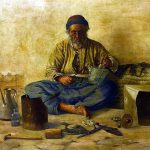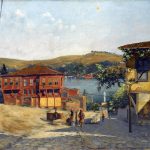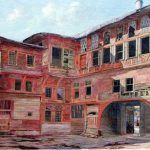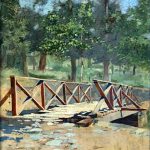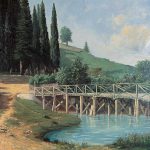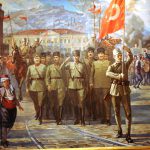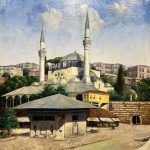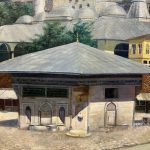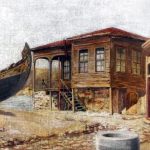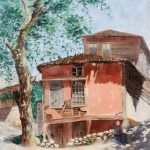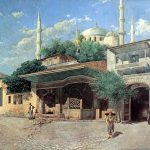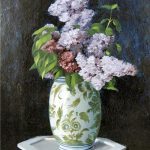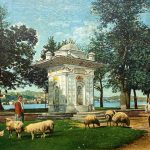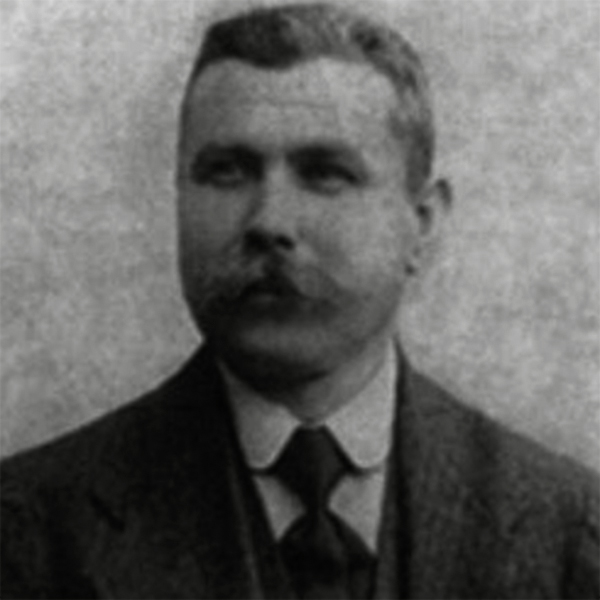
Who is Ahmed Ziya Akbulut? (1869-1938)
Who is Ahmed Ziya Akbulut, who adopts an approach close to the Military Painters School in terms of subject selection and style? The works and life story of Ahmed Ziya Akbulut, who cares about perspective with a photographic and detailed brush…
Ahmed Ziya Akbulut, an astronomer, mathematician and calligrapher, became interested in painting at a young age; He took lessons from Nuri Pasha at Kuleli High School and from Hoca Ali Rıza at Harbiye, which he graduated in 1887.
He graduated from the Painting Department of Sanayi-i Nefise Mekteb-i Âlisi, which he entered in 1892, in 1897 and continued as a perspective and mathematics teacher at this school until 1938. He made friends with artists such as Impressionists of the period, İbrahim Çallı, Hikmet Onat and Feyhaman Duran.
During his service at the 2nd Corps Command in Edirne, he taught art and mathematics. He worked on maps at the Erkan-ı War Office. He gave lectures in different fields such as French, geometry, perspective, painting, astronomy, mechanics and mathematics at Koca Mustafa Pasha High School, Kuleli Military High School, Gülhane Military High School, Darüşşafaka High School, Military Medicine High School and Sanayi-i Nefise School.
He left his teaching position in Kuleli when he became the manager of Tophane-i Amire Painting House and Metakib-i Military Printing House. He was the Director of Military Manufacturing at the Military Industry School. The artist, who was the Chairman of the Board of Directors of the Ottoman Painters Society, had his articles explaining perspective published in the newspaper published by the society.
He was appointed Deputy Director of Kandilli Observatory in 1919. He worked together with Hoca Ali Rıza and Hüseyin Zekai Pasha in the Old Weapons Museum Commission, which was planned to be established by Mahmud Şevket Pasha in 1906. Akbulut, who served as the third director of the Turkish Islamic Museum, was also tasked with establishing the Revolution Museum, which was planned to be opened by the Istanbul Municipality.
He worked as a teacher and muvakkit (a person who tells prayer times by looking at the sun) in the field of astronomy; He was accepted as a member of the Paris Astronomical Society in 1924. He prepared many rubu boards and sundials, one of which is in the Kandilli Observatory today; He became chief muvakkit in 1927.
Although Ahmed Ziya Akbulut was a graduate of Sanayi-i Nefise Mektebi, he adopted an approach close to the Military Painters School in terms of subject selection and style, except for a few figurative paintings such as the Soldering Jew and the Old Man, which he painted for his graduation; He gave importance to perspective with a photographic and detailed brush. The Tomb of Mimar Sinan, which he chose as the subject, was also built during World War II. It is the pictorial reflection of the Ottomanism/Islamism ideology that was maintained against Europe during the Abdulhamid Period. In this period, when Ottoman/Islamic architecture was documented with photographs, most of the military painters were committed to the ideal of creating a civilized, developed Ottoman Empire; They painted civil and religious architecture such as palaces, mansions, pavilions, mosques, tombs and fountains, ancient works and landscapes, especially the beauties of Istanbul, which contributed to the formation of this identity.
The artist, who was nicknamed "Menazirci Ziya" (Perspective Ziya) by his friends, wrote two books named Amel-i Menazir (1896) and Usul-u Ameliye-i Fenni Menazir (1922); He published a calendar called Takvim-i Ziya. Ahmed Ziya Akbulut, who knew French, German, English and Arabic and was also engaged in bookbinding, carpentry and blacksmithing, was an important scientist.
